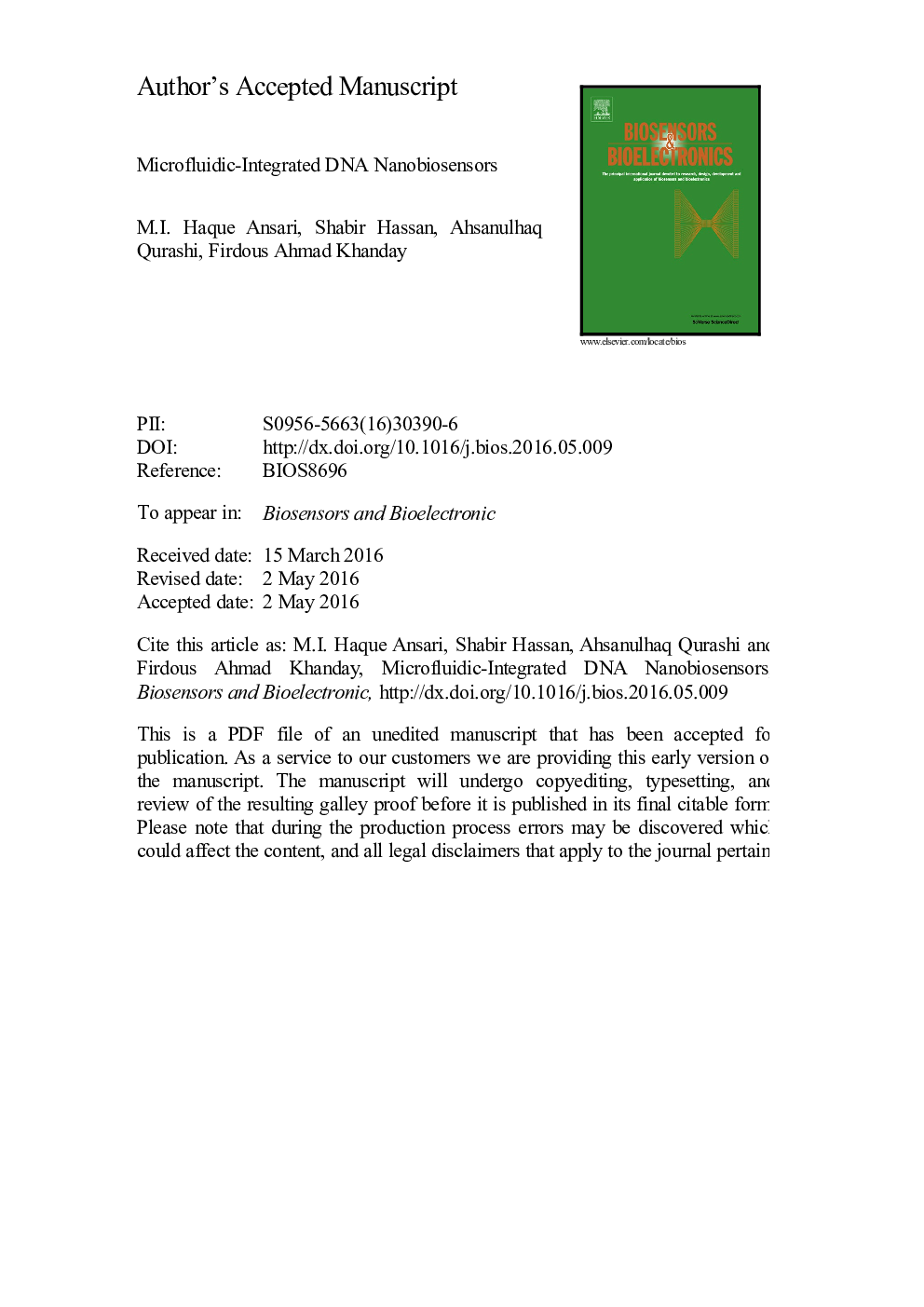| Article ID | Journal | Published Year | Pages | File Type |
|---|---|---|---|---|
| 7230206 | Biosensors and Bioelectronics | 2016 | 33 Pages |
Abstract
Over the last few decades, an increased demand has emerged for integrating biosensors with microfluidic- and nanofluidic-based lab-on-chip (LOC) devices for point-of-care (POC) diagnostics, in the medical industry and environmental monitoring of pathogenic threat agents. Such a merger of microfluidics with biosensing technologies allows for the precise control of volumes, as low as one nanolitre and the integration of various types of bioassays on a single miniaturized platform. This integration offers several favorable advantages, such as low reagent consumption, automation of sample preparation, reduction in processing time, low cost analysis, minimal handling of hazardous materials, high detection accuracy, portability and disposability. This review provides a synopsis of the most recent developments in the microfluidic-integrated biosensing field by delineating the fundamental theory of microfluidics, fabrication techniques and a detailed account of the various transduction methods that are employed. Lastly, the review discusses state-of-the-art DNA biosensors with a focus on optical DNA biosensors.
Related Topics
Physical Sciences and Engineering
Chemistry
Analytical Chemistry
Authors
M.I. Haque Ansari, Shabir Hassan, Ahsanulhaq Qurashi, Firdous Ahmad Khanday,
